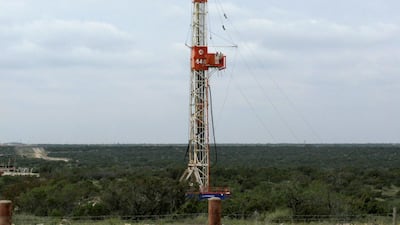Brent crude oil prices jumped above US$65 per barrel for the first time since 2015 after the shutdown of the Forties North Sea pipeline knocked out significant supply from a market that was already tightening due to Opec-led production cuts.
Brent crude futures, the international benchmark for oil prices, were at $65.29 a barrel at 02.53 GMT, up 60 cents, or 0.9 per cent, from their last close.
That marks the first time Brent has risen above $65 since June, 2015.
US West Texas Intermediate (WTI) crude futures were at $58.30 a barrel, up 31 cents, or 0.5 per cent, from their last settlement.
“Brent crude raced higher ... as news broke that the North Sea’s Forties Pipeline system would have to be shut down for a ‘number of weeks’ after a hairline crack was found in it,” said Jeffrey Halley, a senior market analyst at the futures brokerage Oanda in Singapore. “The pipeline ... is a significant component underpinning the Brent benchmark.”
Britain’s Forties oil pipeline, the country’s largest at a capacity of 450,000 barrels per day (bpd), shut down on Monday after cracks were revealed.
_____________
Read more:
Venezuela default - an opportunity or risk for Opec?
Iraq and Iran sign Kirkuk oil swap deal
_____________
“The market reaction shows that in a tight market, any supply issue will quickly be reflected in higher prices,” said ANZ bank.
The jump in Brent prices widened its premium to WTI prices to almost $7 a barrel, up from around $5 last week, making US oil exports more attractive.
The cheaper WTI is also a result of rising US oil production, which has jumped by more than 15 percent since mid-2016 to 9.71 million bpd, levels not seen since the early 1970s.
US production is now also not far off that of top producers Russia and Saudi Arabia.
The rising U.S. output threatens to undermine efforts led by Opec and a group of non-Opec producers, most importantly Russia, to support prices by withholding supplies.
Opec and its allies started withholding supplies last January and currently plan to continue doing so throughout 2018.

